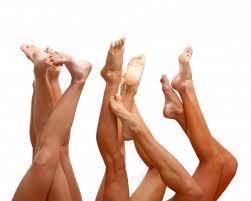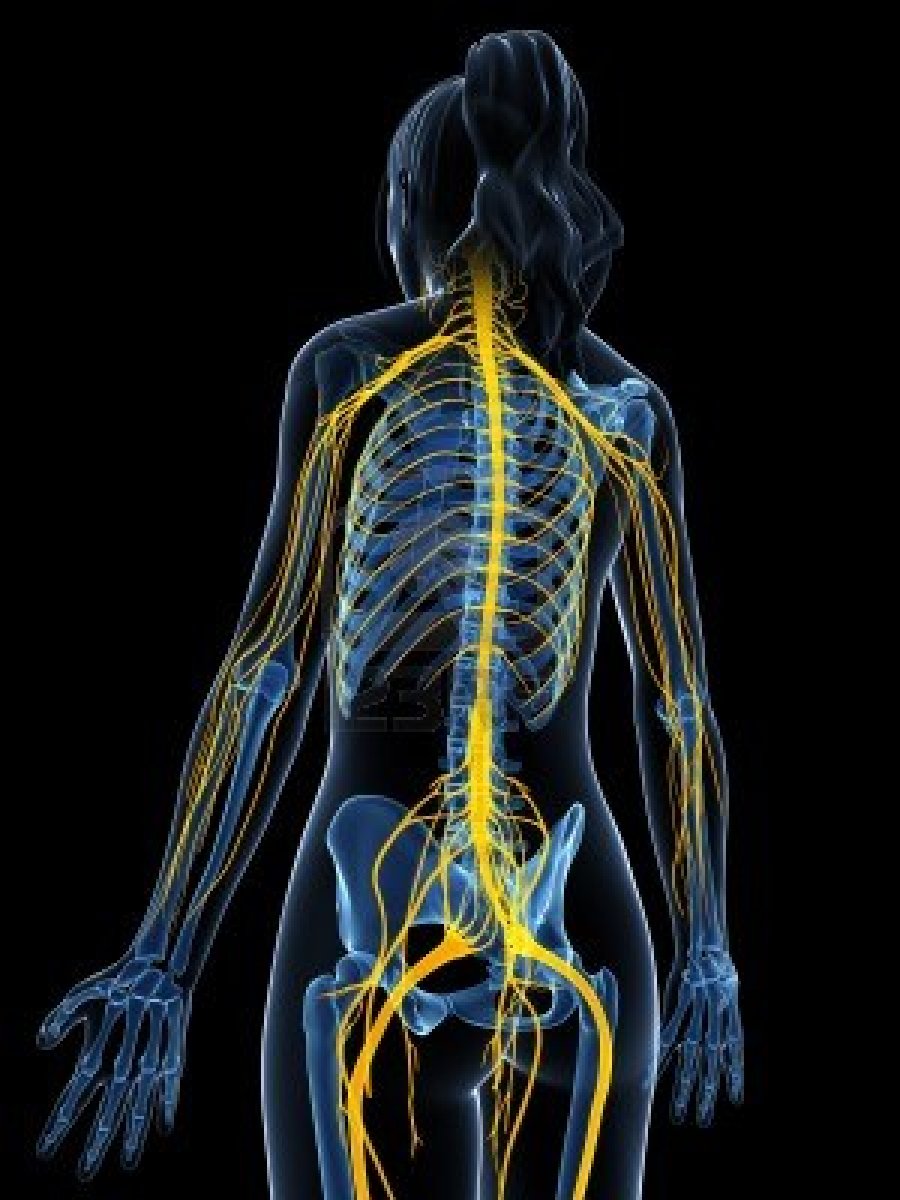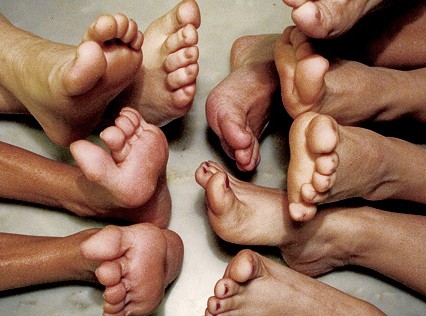
The Neurology of Aging & Movement Longevity
You have probably read at least a dozen articles advocating the benefits of protecting cognitive function as we age. From exercise to crossword puzzles, there are many ways to keep your brain sharp as you age.
But how much do you think about peripheral nerve health and age?
Our ability to maintain an active lifestyle and participate in the hobbies we enjoy is just as dependent on a strong and healthy peripheral nervous system as it is to cognitive function.
In this article we are going to explore the neurology of aging, how it affects all of us and exactly what we can do keep our peripheral nervous system vibrant and healthy ensuring what I call “movement longevity”.
The Nervous System
 Comprised of both the Central Nervous System (CNS) (brain & spinal cord) and Peripheral Nervous System (PNS) (nerves & axons), our nervous system is responsible for coordinating voluntary and involuntary actions.
Comprised of both the Central Nervous System (CNS) (brain & spinal cord) and Peripheral Nervous System (PNS) (nerves & axons), our nervous system is responsible for coordinating voluntary and involuntary actions.
Our PNS is a complex network of spinal nerves and plexuses branching from the spinal cord, and includes the cervical spinal nerves, brachial plexus and lumbosacral plexus. Traveling distally from the spinal cord, it is the peripheral nerves which are sensitive to stimulation from the palm of our hands to the tips of our toes.
These peripheral nerves are sensitive to afferent stimuli or input signals which go back up to the CNS. The CNS then processes this input and sends an efferent signal or action signal back down to the PNS resulting in controlled, precise movements.
Movement Accuracy
To improve the accuracy and efficiency of each movement, our neuromuscular system is controlled by both a feed forward and feedback system or loop. Feed forward responses (aka pre-activation responses) are based on previous experiences or muscle activation patterns. These responses are stored in an area of the brain referred to as the cerebellum – and occur before the completion of the movement. An example of a feed forward response would be activating the ankle stabilizers before foot contact.
Conversely, feedback responses (aka reactive responses) allow our neuromuscular system to adjust to errors, and auto-correct throughout a given movement. An example of a feedback response would be activation of ankle stabilizers when walking on an uneven terrain.
Age & Input Accuracy
Where the concept of neuromuscular control, movement efficiency and aging come together is through the accuracy of inputsignals as dictated by the peripheral nervous system. The more accurate the information coming in, the more precise our movements will be.
If we were to imagine someone of an older age, we typically picture someone who is more frail and timid in their movements. We may note a delay in the correction of movement errors and often associate this delayed correction with an increased risk in falls.
With falls being one of the biggest concerns as we age, instability and decreased control can often be attributed to an aging peripheral nervous system. So is there anything that can be done to protect the nervous system as we age so that we can maintain the movement accuracy of our younger years? Or must we succumb to the inevitable process of an aging neuromuscular system?
The good news is there is absolutely something you can do to protect your peripheral nervous system from the aging process. It is called neuroplasticity through barefoot science.
To fully understand this concept let’s continue exploring the peripheral nervous system specifically as it relates to the plantar foot.
Plantar Proprioceptors
 What’s unique about the PNS and the foot is this is where the smallest nerve branches exist. Divided into both sensory and motor nerves, cadaver studies have shown that 3x as many branches off of the tibial nerve provide sensory function.
What’s unique about the PNS and the foot is this is where the smallest nerve branches exist. Divided into both sensory and motor nerves, cadaver studies have shown that 3x as many branches off of the tibial nerve provide sensory function.
The peripheral nerves that have a sensory function to the skin are referred to as cutaneous nerves or in the bottom of the foot they are our plantar cutaneous receptors (aka mechanoceptors). These small plantar cutaneous nerves are responsible for processing information such as texture, skin stretch, vibration, deep pressure and light touch. All of the stimuli which allows us to maintain upright stance, manipulate uneven terrain and absorb impact forces.
Our ability to detect surface compliancy and impact forces is heavily dependent on vibration detection. The importance of this sensory input is demonstrated by the fact that 80% of our plantar mechanoceptors are sensitive to vibration!
If we go back to aging and the accuracy of input information for precise and controlled movements, the importance of vibration detection is of upmost importance.
So how does aging affect our ability to detect vibration?
Studies have shown that as we age, our ability to detect vibration input is impaired. From decreased mechanoceptor density to increased input threshold, by the time we are age 70 our plantar foot requires twice the stimulation to create the same response. This means that we need to do everything we can to ensure accurate vibration input is entering our plantar peripheral proprioceptors.
Footwear & Impaired Vibration Input
One of the greatest inhibitors of vibration input are the shoes we love. Regardless of their fashion and functional benefits, footwear is not a natural feature of our nervous system or environment.
Our nervous system and the bare foot were not designed to decipher impact forces through footwear and cushion. This concept is now readily accepted within the running and minimal footwear industries.
So what can we do to offset the aging nervous system and maintain movement longevity in the unnatural shod environment in which we live?
Tips for Movement Longevity
Tip #1 – Keep blood sugar under control
Although we typically associated elevated blood sugar levels with diabetes, we can all experience fluctuations in our blood sugar levels (think Ben & Jerry’s ice cream).
Elevated glucose in our blood stream is converted to AGEs (advanced glycation end products). The myelin that surrounds our peripheral nerves is sensitive to these AGEs – which cause demyelination and disrupts signal transport.
The formation of AGEs stimulates an increase in oxidative stress, free radical formation and an up-regulation in our pro-inflammatory markers. Or essentially elevated blood sugar levels (even in a non-diabetic) causes aging and degeneration of peripheral nerves (with the foot nerves going first!).
Tip #2 – Consider Nerve Protective Vitamins
When I was in Graduate School a big part of my focus was on vitamin supplementation and diabetic peripheral neuropathy. Having spent so much time researching this topic I became a firm believer in the benefits of the appropriate vitamins in protecting nerve health as we age.
Everyone can benefit from nerve protective supplements – especially if we consider that elevated blood sugar levels (even in a non-diabetic) can start to damage our peripheral nerve function.
Vitamin #1 – L-Methyl Folate
This is not your mother’s folic acid!
L-methyl folate is the activated form of folate (folic acid) which has been shown to increase nerve growth factor. When taken over a period of 6 months studies have shown an increase in epidermal nerve fiber density (or in other words more peripheral nerves!). Link to study
Dosage: 1000 ug X 3 times day
Vitamin #2 – Acetyl-L-Carnitine
ALC is another powerful nerve protective supplement.
ALC has been shown to decrease painful nerve symptoms, as well as increase vibratory sensation. Remember that we maintain balance and absorb impact forces based on our ability to detect vibration so this is extremely beneficial as age!
Dosage: 500mg x 2 times day
Vitamin #3 – R-Lipoic Acid
This is probably my favorite supplement! (Yes I do get that excited over a vitamin)
Touted as one of the most powerful anti-oxidants, ALA has been shown to improve micro-circulation to peripheral nerves while decreasing oxidative stress. A key point about ALA is that it must be taken in the R-LA form. “R” form is one that is biologically active (vs. “S” form).
Dosage: 600mg x 1 time day
Tip #3 – Cardiovascular Exercise
Cardiovascular exercise has many benefits, one of which is related to peripheral circulation. The vascular system, just like the nervous system, is very intelligent meaning that if there is a loss in circulation to one area of a muscle the vascular system will create what’s called collateral circulation (or in other words form new blood vessels). This is why cardiovascular exercise is beneficial for those with peripheral arterial disease.
So just like the collateral circulation formed in muscles, our vascular system can create new micro-vascular pathways to our nerves. The more blood and oxygen to our nerves the healthier they are!
Tip #4 – Myofascial Release
When I have a patient with idiopathic nerve symptoms I often include myofascial work into their recovery program. Our complex network of superficial and deep fascial is intertwined with just as complex of a network of arteries, veins and peripheral nerves.
As our peripheral nerves course from the spine down to the foot it is only inevitable that they may get “stuck” or “sticky” at some point. From muscle adhesions to a loss in fascial flexibility, our inflexibility can often impede nerve conduction.
Just like when you sleep on your arm and wake up with it tingling, to a smaller degree this is what’s happening to our peripheral nerves when they get caught in fascial tissue.
I often recommend to my patients to release their plantar foot, up the back of the calf to the hamstrings and into the glutes and piriformis. For those with nerve symptoms this should be done daily.
Tip # 5 – Go Barefoot!
This one pretty much goes without saying! If our small nerves are on the bottom of the foot we want to keep them sensitive and awake through frequent barefoot stimulation.
Our nervous system is very plastic – which means that it can be shaped, challenged and molded based on the stimuli it encounters. Conversely, if you do not stimulate your peripheral nervous system it will begin to weaken, fade and atrophy.
Whether your barefoot routine includes vibration training, standing on different textures or simply walking around your home – daily barefoot stimulation is enough to keep these small nerves on point!
Want to kick it up a notch? Workout barefoot!
***
To learn more about foot health, barefoot training and EBFA Education
please visit www.ebfafitness.com


